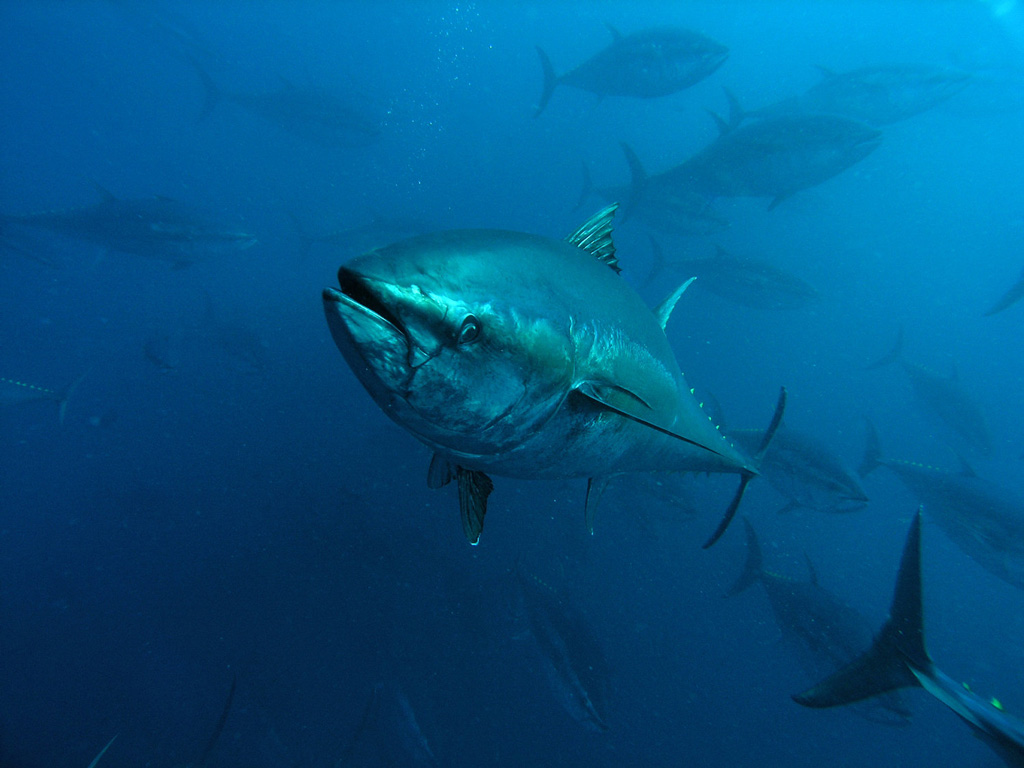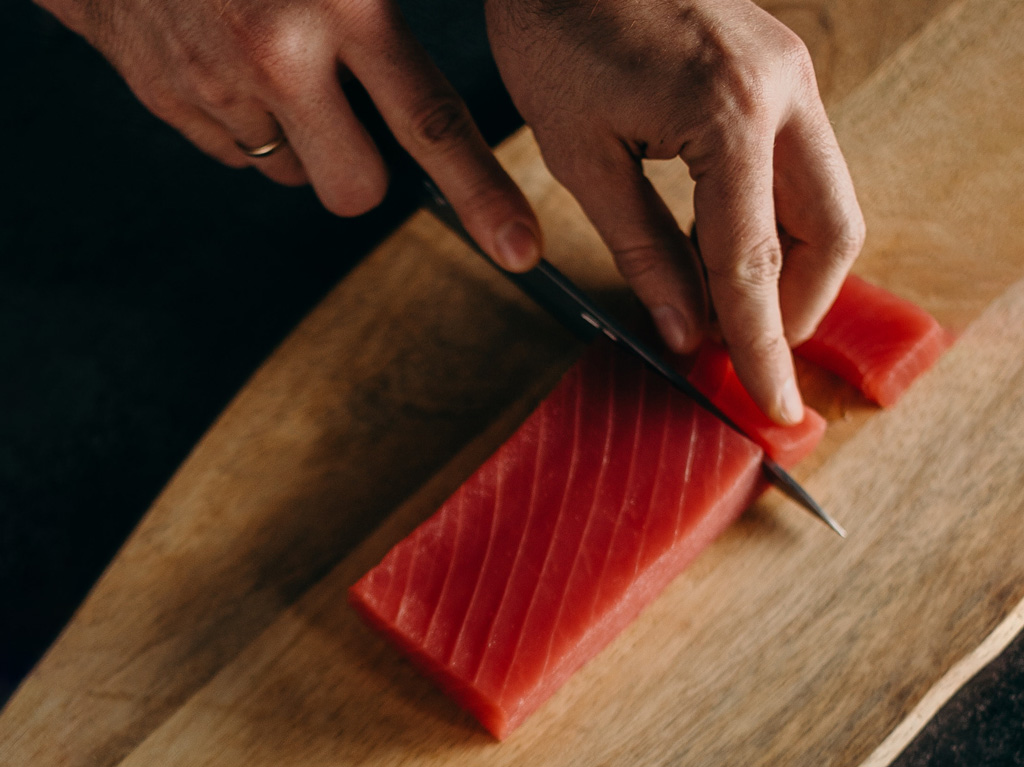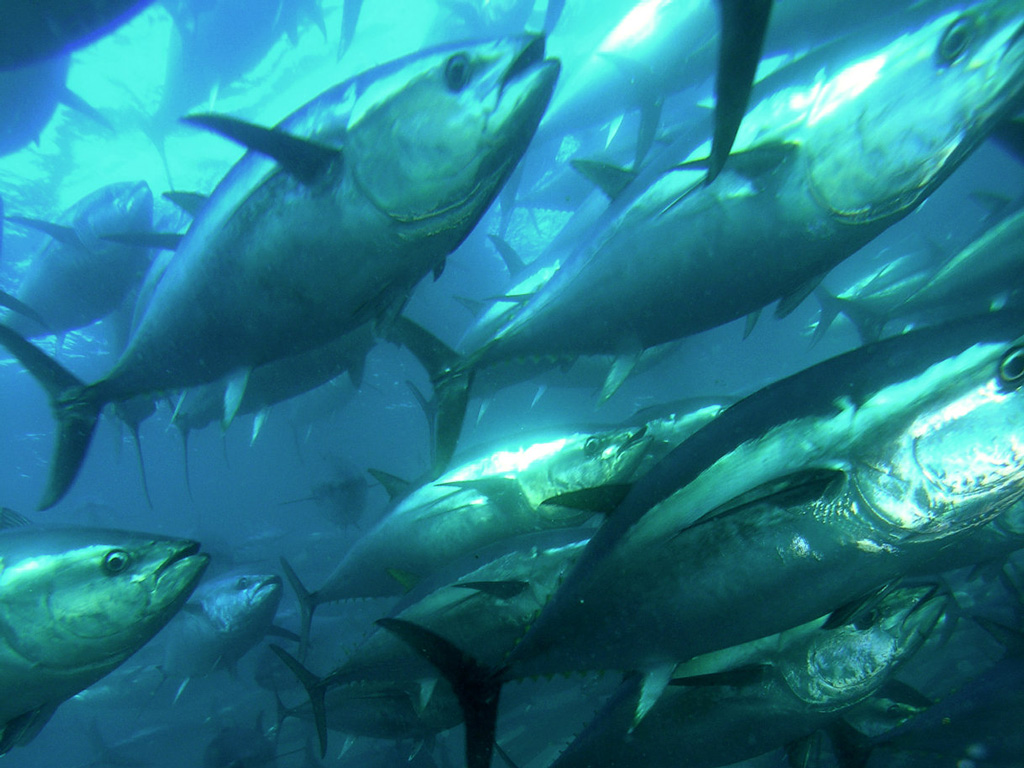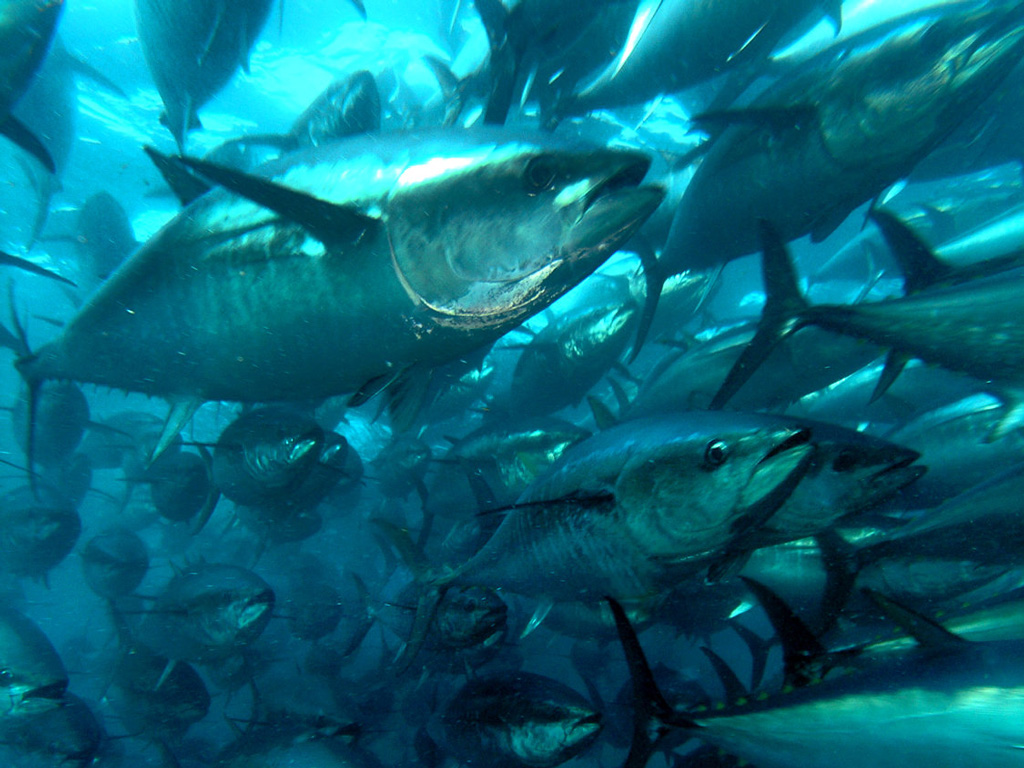
Bluefin tuna
lat. Thunnus thynnus
Bluefin tuna
Tuna is large, pretty and elegant fish. Its body shape gives away fast and agile swimmer. The body is muscular, strong, spindle shaped, a bit curved in the middle and with a strong caudal fin. Upper side of the body is mettalic blue, almost balck in color whereas the belly is silver with freckles expanding in the direction of the head. The head is slightly bigger and pointy. It can grow to a maximum of 4 m in length and 600 kg in weight. The average weight reported is 12kg. There are bigger types of tuna, however.
Tuna is oily fish, that is a common fact. As a pelagic fish, it’s constantly on the move and in pursuit of food. It feeds mainly on oily fish but it eats other types of fish too. It can even go all the way down to the bottom to search for groundfish . Its permanent habitat can’t be determined precisely. However, there are areas where its occurence has been reported more frequent. Tuna is permanently present in the Adriatic in both open spaces and completely closed bays. The only area where it hasn’t been seen much is the west coast of Istria.
Nutritional valueDue to the wide distribution and the taste that resembles meat , tuna is considered the most popular fish on the market. Its meat is of extreme quality mostly because it is rich in high quality proteins and poor in fat.
However, tuna is a bit richer then the other types of fish. For example, there is 160 kcal, 34 g of proteins and 400 mg of trypthophan acid that’s a well known sleep regulator in 120 g of roasted tuna.
Eventhough low in fat, tuna is rich in omega 3 fatty acids especially EPA and DHA that are indispensable for our cardiovascular system. It has been reported a sufficient intake of the mentioned fats prevents the formation of cloths in the arteries and reduces trygliceride levels. Combination with high content of potassium, magnesium and vitamin B6 present in tuna meat makes it a perfect ally in the fight against heart disease.
Tuna is also considered to be an excellent source of niacin that participates in energy production and body fat processing. 120g of tuna meat is enough for more then 65% of the daily need for this mineral.
Tuna is rich in various selenium minerals as well. 120g of roasted tuna will meet more then 75% of the daily need for this mineral. Selenium is important because of its antioxidant capacity and indispensable for the production of glutathione peroxidase that is used by the liver to detoxify from the harmful substances such as pesticides, heavy metals and drugs.










